
Its been a good year so far for Sikhs and Canadian sports. First, we’ve had NHL regular season and playoff games broadcast in Punjabi. We’ve also the first NBA game broadcast in Punjabi. And this year, at the annual Vaisakhi game for the Toronto Raptors, four good looking Sardars sang the Canadian and American national anthems. Performing on drums is Jiwanjot Singh Gill, on dilruba Harman Singh, on dhol is “Tabla Guy“, Gurpreet Singh Chana, and on vocals and harmonium, Dr. Onkar Singh.
Updated: Friday, at 11:30PM
Last year we covered the story of a Sikh youth accused of brandishing his kirpan on the schoolyard. Accounts of the incident were hugely divergent; it was unclear whether an assault had ever actually occurred, or whether the report was a feature of animosity toward religious minorities in Quebec.
Yesterday that youth was fully acquitted of the kirpan-based charge, and his other possible charges were dispensed. The outcome of this case is a success for the youth involved, but also in that its outcome has no bearing on the interpretation or application of its effect to the kirpan in general. The judge in this case intimated that the case had gone too far and would never have been brought, were it not for the youth’s nationality and religious identity:
UPDATE: The 13-year old youth who was arrested that night has been charged with assault and is scheduled to appear in court on May 19. [source] Thanks to everyone who’s given more information in the comments!
———————————————————————————————————————————–
Some tragic news is coming out of Toronto tonight from the Dixie gurdwara’s Vaisakhi celebrations. 
A Mississauga teen was stabbed in the stomach and seriously injured Tuesday night during a [Vaisakhi] celebration at the Ontario Khalsa Darbar temple in Mississauga.
The 15-year-old male was taken to the Hospital for Sick Children in Toronto after the stabbing at around 10 p.m. in a kitchen in the temple’s basement. The victim was conscious and breathing, a Peel police officer said at the scene, and was believed to be in serious but not life-threatening condition.
Peel police arrested a teenager at the scene who is about the same age as the victim.
The stabbing happened during Vaisaki, an annual religious festival marking the start of the new solar years that, throughout the day, draws about 30,000 people to the temple, also known as Dixie Gurdwara. [link]
An equally young suspect is in custody, though no information about motive has been released yet. If any readers in Toronto can update us, your southern neighbors would really appreciate it.
A suspect, about the same age as the victim, is in police custody. Police say the knife used in the stabbing may have been set out with some food. [link]
I’ll refrain from speculating about possible motives since there is so little information to go on right now. What I can say at this point, regardless of the back story, is that there is no acceptable justification for this senseless act of violence.
I’ll update this entry as more information is released though. Our thoughts are with the young victim, his family, and Toronto’s sangat.
An airline with potentially the best airplane food (for those with Punjabi palates) has just launched. Akal Air has just started bi-weekly flights (Wednesdays and Saturdays) from Birmingham, UK to Amritsar, a gateway for Sikhs to  Punjab.
Punjab.
Daljit Singh Birring, managing director of Akal Air, suggested that Birmingham International Airport is the “perfect base” for the airline. He said: “Access to Amritsar is of huge importance to the large Punjabi and Sikh population of the Midlands taking the pilgrimage to the Golden Temple and visiting family and friends.” [cheapflights uk]
The new flights are good news for the large Asian community in the Midlands. “Birmingham is the perfect base for Akal Air. Access to Amritsar is of huge importance to the large Punjabi and Sikh population of the Midlands taking the pilgrimage to the Golden Temple and visiting family and friends, as well as for business people trading with India’s emerging and developing economy,” says Akal Air managing director, Daljit Singh Birring. [link]
It seems that hospitality will be a major feature of the airline.
Akal Air customers will always be treated with respect, due care and consideration and be offered a pleasant flight experience by all Akal Air staff from Check-in, boarding, in-flight through to baggage claim. [Akal Air]
Happy travels to all in Birmingham! I hope to see Akal Air expand in the near future.
Last week, I posted on the Gurmat Gian Group’s performance of classical keertan. This all Sikh women’s group, expect 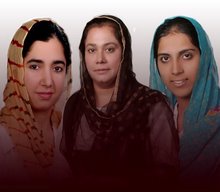 for a tabla player, is based in Ludhiana, Punjab. This week, I wanted to share a brief interview with one of its members, Keerat Kaur.
for a tabla player, is based in Ludhiana, Punjab. This week, I wanted to share a brief interview with one of its members, Keerat Kaur.
1. How did you come to join the Gurmat Gian Group? How long have you been with the group? How often does the group meet?
The Gurmat Gian Group was formed by my mother Gurpreet Kaur. My mother Gurpreet Kaur and myself used to do kirtan in the weekend gatherings of Gurmat Gian Missionary Trust. These programmes are held every Saturday and Sunday. Impressed with our singing, we were asked by the organizers and especially by Rana Inderjit Singh to train young boys and girls to do kirtan. Now Gurpreet Kaur takes regular classes at the Gurmat Gian Missionary College where many girls and boys of different age groups are learning kirtan.
Encouraged to go in to recording Gurabni Kirtan lead to the formation of Gurmat Gian Group which now has 5 CDs to its credit.
I’m a bit of an NPR Junkie, and one of my favorite series I listen to is called This I Believe. This I Believe is a national media project that engages everyday people in writing, sharing, and discussing the core values and beliefs that guide their everyday lives. I’ve been following the series for quite some time now, but last week, I came across a story that really moved me – it’s called Finding Freedom In Forgiveness.
In 1984, Jennifer Thompson -Cannino testified that Ronald Cotton was the man who raped her. Eleven years later, DNA evidence cleared him of the crime.
This story speaks to the healing power of forgiveness.
Although I haven’t heard many Kirtanis or Granthis speak about this topic much, Guru Sahib in fact has much to say about “Khima” (Forgiveness). As I’m starting to research and reflect on this concept through Gurbani, I came across this line that I immediately connected with. From Bhagat Kabeer Ji, page 1372:
jehaa lobh theh kaal hai jehaa khimaa theh aap |155|
Where there is greed, there is death. Where there is forgiveness, there is God Himself.
Finding Freedom in Forgiveness is less than four minutes long and worth the listen. I would love to hear what others think of this audio essay and perhaps an experience of your own as you’ve discovered forgiveness on your own journey…
Recently we have discussed gurmat sangeet (i.e. classical keertan) on TLH. This past week, I came across an all Sikh women’s gurmat sangeet group from Punjab. Their voices are absolutely beautiful! The emotion that raags convey that words alone cannot express is actually felt in these women’s performances. You can visit the Gurmat Gian Group blog here. They also have a youtube channel here.
Here is their performance of the shabad, “Sur Nar Mun Jan Amrit Khojday”.

I recently came across this CNN report of four individuals who discuss their experiences of wearing religious garments in the US. Two of the individuals are Sikh men (where are the Sikh women at) along with a Muslim woman and a Jewish man.
Ajitpal Singh Rania: Ajitpal lives in the Washington area and immigrated to the United States pre-9/11 into a college town. Aside from curious looks, he feels that he has not really been discriminated against as a Sikh wearing a turban because he arrived in a college town that was more open to diversity. Ajitpal also believes that educational workshops have helped many American learn more about Sikhs. Watch his video report here.
Syeda Martha Graham: Syeda of Kansas City, Missouri, converted to Islam and made a personal decision to not only wear a head scarf but also a face cover. Not wearing her head scarf makes her feel vulnerable, similar to how others feel about not wearing a top. She remembers an incident where a bank employee asked her to take her “mask” off; but another employee came to her defense. Syeda feels more people are nice than offensive. She also wishes people would assume less and ask more questions. Watch her video clip here.

Canada’s problem with its Sikh minority should be of concern to Americans not just because Vancouver borders on the US, but for the broader lessons this story of ethnic conflict teaches. When a country imports an alien population, it often brings in all of the conflicts that bedeviled the immigrants in their homelands. Consequently, Western nations can get dragged into intractable conflicts that would otherwise be none of their business. Moreover, differences between the immigrant and host populations are likely to prove disruptive, even disastrous. Differences in history and culture pose difficulties enough, but most divisive are differences in nature. As long as we continue to ignore the possibility that there are biological differences among races that cause them to create different types of societies, we run the risk of importing populations that are prone to poverty and crime and hostile to white people and their values.
One could almost pity the plight of white supremacists these days. Their political influence has diminished greatly and their numbers are dwindling. A black man is the most powerful person in the world. Fearing public ostracization, they constantly have to ensure their words never betray their thoughts. In 2009, being a racist just isn’t cool anymore. But that hasn’t stopped this vocal minority from trying their best.
“White Pride” sites on the internet are full of rants against various ethnic and racial communities, blaming them for everything wrong with the world’s economic, social and political woes. Usually, its African Americans, Hispanics or Jews that are targeted. Now it looks like the Sikhs have caught their attention.
Harpal Singh Kapoor, Director of Miami-Dade Transit, must be the coolest bureacrat in all of Florida. At a recent office party he not only showed off some mad bhangra skills, he taught his non-Punjabi colleagues some skills too, to the beat of a live dhol.

I know there are some purists in the audience who think that bhangra might not be a good way to promote relations with Sikhs because it’s Punjabi culture, not Sikh, etc. … but I disagree.
Music and dance are a universal language. Kapoor probably already knows his office staff, and so he’s not a stranger to them, but unless they do bhangra in the office, they probably don’t get a chance to connect across the conference table like you can in response to the beat of a dhol. Connecting on that most basic human level, in response to music, reminds people that underneath our exteriors we’re all the same. And if they DO do bhangra in the office, then I’m moving to Florida to join their staff.
No longer are Punjabi “staarz” (i.e. Gurdas Maan, Arminder Gill, etc.) or Sukhbir Singh Badal’s Mrs., Harsimrat Kaur Badal (i.e. Nanhi Chhaan project), the only ones focusing on the “girl child”, but also a granthi at a California Gurdwara. I was recently surprised to hear a granthi support the idea of gender equity as part during his Punjabi kathaa of a shabad he was singing. No he wasn’t a renaissance granthi, but a common one you would encounter in your general Gurdwara. The sangat wasn’t full of progressive youth/parents, but consisted of lay-persons. AND the focus of his kathaa wasn’t gender equity, but our needs/yearnings. So you may ask how was he promoting gender equity? Well, he used the yearning for a thee (daughter) or puthar (son) in the SAME example to help the sangat understand the shabad’s message. In my experience, the yearning for a daughter and son are never used together to help the sangat think beyond their wants and just accepting Waheguru’s will. Common examples are a yearning for a betaa or a mother caring for a betaa (we could also add a big house and nice car to the list). I have never heard of a yearning for a betee or caring for a betee. It has been during these kathas that the contradiction between theology and contemporary practice of Sikhi have been poignantly highlighted for me. Yes, theologically we believe in gender equity (it’s in Gurbani with examples in Sikh history). However, the common examples used to intimately relate and rely the Guru’s message to an every-day (opppss … maybe I should say Wednesday and Sunday) sangat reify gender inequity. From my perspective, I was finally hearing a common granthi make an attempt to break away from mold.
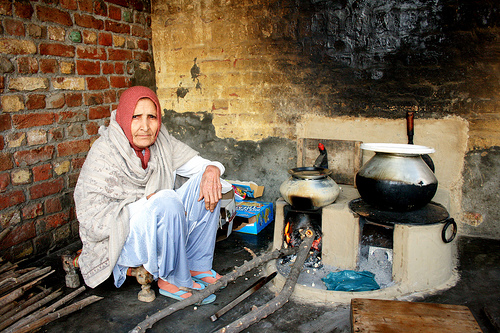
While driving home from a friend’s house one night I noticed something out of the corner of my eye as I passed the rows of darkened homes in his neighborhood. One garage door on the block was open and the garage lights were on, but there were no cars inside. Instead, there was an older Mata/Mai/Bibi/Bebe standing in front of a stove making roti, while a younger lady was dishing out what must have been some dal/sabzi.
The site was kinda cool and I had to resist the urge to stop my car and take a picture to post here – for fear of looking like a creepy weirdo. I did, however, think about it all the way home. What made it worth thinking about for a 10-minute drive is simple: it took me back to Punjab, where many farming families have two kitchens – one inside and one outside (where a bulk of the cooking is done).
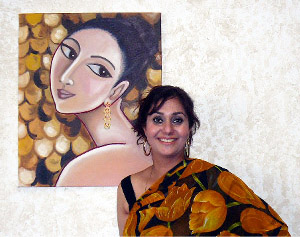 As International Women’s Day approaches us this weekend, I wanted to highlight the story of one woman who left a life of violence to a home of comfort built from creativity. Tanya Momi, a Bay Area South Asian woman from Chandigarh, is a painter and owner of “Spoil-Me Salon”, who left a long-term abusive marriage where she was treated like an “educated maid”. On March 8th her work will be launched in San Francisco as part of Amnesty International’s Stop Violence Against Women’s traveling art exhibit.
As International Women’s Day approaches us this weekend, I wanted to highlight the story of one woman who left a life of violence to a home of comfort built from creativity. Tanya Momi, a Bay Area South Asian woman from Chandigarh, is a painter and owner of “Spoil-Me Salon”, who left a long-term abusive marriage where she was treated like an “educated maid”. On March 8th her work will be launched in San Francisco as part of Amnesty International’s Stop Violence Against Women’s traveling art exhibit.
Vidya Pradhan writes:
“Tanya Momi rebuilt her life after a traumatic marriage and divorce and in her own quiet way she helps other women do the same. “Women come into my life through the salon,” she says. “They are like the missing puzzle pieces of my life.” Through her work in the salon and her paintings she reaches out to offer comforting messages of hope and renewal.”
Judging from everyone’s facebook status (yes, this is what it has come to), people are excited about the numerous awards Slumdog Millionaire won at last night’s Oscars (yes, Jodha, I watch the Oscars too). As was anticipated, the rag-to-riches film won Picture of the Year. Among it’s other awards was A.R Rahman’s win for Best Song, Jai Ho.
As anticipated, the Oscars presented this catergory’s nominations by a live song/dance number (the other songs nominated were another SM number, O Saya and Down to Earth from the film Wall-E which was sung by the lovely John Legend). The stage was full of multicultural bollywood-style dancers and instrumentalists. And if you looked closely enough, scattered throughout the audience were dholis. I tried to dig up some information about who these dhol players were and found nothing on the internet (PR anyone?). However, thanks to the fact that punjabi kids know what’s going on with all things bhangra-related (not necessarily a good thing may I add), I found out that the group of guys playing the dhol were the north american group called Dhol Nation Jess & Jag Tooray and Shawn Khalsi (see the comments below for the discussion of who it was – like I said, some PR would have straightened this out). Since the Oscars were quite clearly on a date with India last night, it was nice to see the dhol exposure. This is the best video I could find (start watching at 2:45, and again at 5:40). If anyone has any other information about last night’s performance – please share it with us.

 Growing up where I did, singing hymns and listening to the Our Father, Who Art in Heaven prayer were a daily occurrence. There was only one religion taught in my school. It was a point of discontent for those of us who followed other faiths and after years of students petitioning to be exempted from such morning meetings, my school reluctantly made exceptions for us. My school was a public school but it was also in England where separation of church and state did not exist.
Growing up where I did, singing hymns and listening to the Our Father, Who Art in Heaven prayer were a daily occurrence. There was only one religion taught in my school. It was a point of discontent for those of us who followed other faiths and after years of students petitioning to be exempted from such morning meetings, my school reluctantly made exceptions for us. My school was a public school but it was also in England where separation of church and state did not exist.
I don’t have a problem with teaching religion in schools, actually I think religion should be discussed at school but practice should not enforced. I do recognize that this raises the question of Sikh-based schools where religious education is provided in accordance with the Sikh faith. However, I will emphasize that these faith-schools are private schools and children often have a choice to attend those institutions.
It seems that the concept of separation of state and church has in effect reduced the amount of time/effort which is spent on teaching religion in schools. A recent article discusses a school in Modesto, California which has decided that learning about world religions is an important subject and in fact, have even made it a graduation requirement.
Johansen High School in Modesto, California, sounds like any other, until the sacred Hindu sound – “ommmmmm” – vibrates from history teacher Yvonne Taylor’s classroom. Today, she’s talking about Hindu ideas of the cycle of death and rebirth. This nine-week course for ninth graders teaches the fundamental beliefs of Christians, Muslims and Confucianists, as well as Hindus, Buddhists, Sikhs and Jews – all tied in with the history of religious liberty in the United States. [link]
Presidents’ Day in the U.S. is kind of a all-in-one holiday, you celebrate Lincoln and Washington’s birthdays while honoring all U.S. Presidents. Some just enjoy the day off too!
On this Presidents’ Day, C-SPAN commemorated the holiday by releasing the results of its 2009 Historians Presidential Leadership Survey (last time they did it was in 2000). Sixty-five historians chosen by C-SPAN and its academic advisors, ranked the last 42 American Presidents across 10 attributes of presidential leadership. These attributes ranged from “International Relations” and “Economic Management” to “Moral Authority” and “Public Persuasion”. There was also a category for “Performance Within Contexts Of Times” to account for the variation in issues encountered by each President.
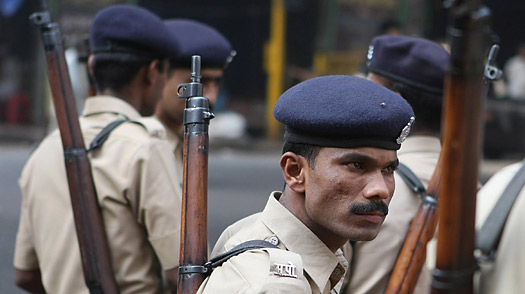
We recently posted on Ensaaf’s new report that studies the all too common practice of extra-judicial killings (usually referred to as ‘encounters’) and the mass cremations that followed by the Punjab police forces during the 1980s and 1990s. Well it looks like these practices were not limited to Punjab and these serious human rights violations are finally hitting the mainstream media.
This week, Time magazine writes about “Rights Groups Probe India’s Shoot-Out Cops“:
Scarcely a day passes in India by without news of an encounter between the police and criminals elements — “encounter” being the local jargon for shootouts involving the police, who are allowed to fire only in self-defense. On Wednesday, it was a “dreaded mafia don” who was gunned down by the Uttar Pradesh police — shot dead, and therefore unable to challenge the police account of the circumstances of the shooting. But some in India have begun to question the frequency of such “encounters”.
The UN Special Rapporteur for freedom of religion or belief visited India last year and just released her report on the country, highlighting, amo ng other things 2 matters that are of special concern to Sikhs: (1) the situation of religious or belief minorities (generally) and (2) justice for victims and survivors of communal violence (including Operation Bluestar in particular).
ng other things 2 matters that are of special concern to Sikhs: (1) the situation of religious or belief minorities (generally) and (2) justice for victims and survivors of communal violence (including Operation Bluestar in particular).
This report will serve as a great tool for future advocacy and education campaigns, as the UN Special Rapporteur is by mandate, an independent entity (though also a diplomatic entity whose mandate is funded by the States she monitors, so of course there are limits to what can be said and done). The office is also a widely respected authority, whose reports are persuasive and create pressure in courts and government offices. Having official international support and recognition of issues that have long been a struggle for Sikh activists to legitimate (lack of accountability, lack of compensation) should advance the Sikh movement to hold accountable Indian government authorities identified as responsible for innocent civilian deaths. Between this report, and the recently released Ensaaf report, 2009 looks like it’s going to be a good year for advancing accountability for crimes by Indian authorities against Sikhs in the 80s and 90s.
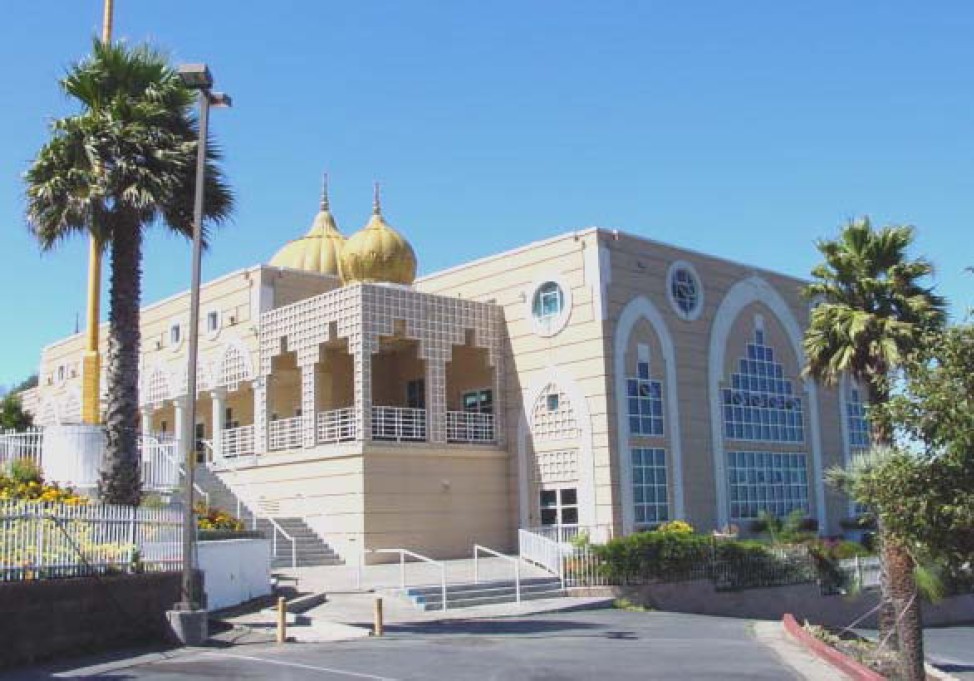 We covered the El Sobrante Gurdwara expansion — and the subsequent PR fallout — a while ago. Earlier this week, the county halted expansion plans pending a further environmental review. Local residents filed a petition for re-review, claiming the “regional service area” proposed in the expansion documents underestimated projected population growth/use in the area:
We covered the El Sobrante Gurdwara expansion — and the subsequent PR fallout — a while ago. Earlier this week, the county halted expansion plans pending a further environmental review. Local residents filed a petition for re-review, claiming the “regional service area” proposed in the expansion documents underestimated projected population growth/use in the area:
The appellants, El Sobrante Valley Planning and Zoning Advisory Committee and Quail Hill Homeowners Association, say the mitigated negative declaration does not adequately address their concerns regarding traffic, parking, noise, possible landslides, drainage, wildlife and emergency vehicle access.
Gurdwara leadership says that community members have it all wrong, though, and that they are off the mark in understanding how regional is defined and what it means for the future of the center.
Sikh leaders said they have spent the past 10 years fine-tuning the project to satisfy the county as well as neighbors.
“We have spent more than half a million dollars” — not including volunteer time and effort — “to comply “… and keep our neighbors advised…”
When we discussed this last time, I asked about the challenges we face explaining our presence and integrating into the fabric of religion in the U.S. We could revisit that conversation, but this time I thought it was curious that the project has been stalled in the face of a staggering economic slowdown in this region. Could this have generated jobs and funding at a time when the area could benefit from economic development? Or was this not worth the end result?
One Afghani woman has had enough. And her story has struck a chord with many Indian woman who are now supporting her struggle to hold accountable an Indian Army doctor who married and abandoned her in Kabul after three weeks of marriage. Major Pant eventually called her, after returning to India, to tell her he was already married and had two children.
Twenty-year-old Sabra Ahmadzai finished her final high school test in Afghanistan, took out a bank loan and then flew to India on the last day of November. She came to look for an Indian army doctor who she said had deceived, married and then abandoned her in Kabul, making her an object of shame and ridicule.
In India, Ahmadzai’s journey has become a rallying point for young women across college campuses who find in her a source of inspiration to question powerful hierarchies of traditional societies. The students in three universities in the capital are trying to set up a “Justice Committee for Sabra” by enlisting eminent lawyers, retired judges, professors and independent activists. [Washington Post] (emphasis added).
She had been pressured by her family and community to marry Major Pant who had been stationed in the medical hospital in Kabul. He was twice her age. Pant approached her family three times with marriage proposals. When her mother turned him away for not being Muslim, he returned with a priest who would convert him to Islam.
“I did not love him. He was my boss and twice my age. But the elders and the priest said, ‘We have given our word and cannot take it back,’ ” she recalled. “He had won their hearts by treating sick children of my relatives, too. They liked him. I followed their wishes obediently.” [Washington Post]
What’s striking are the layers of abuse that Ahmadzai is fighting against- from the marriage coerced by her community to a man twice her age, her battle to hold accountable an Indian army doctor for his lies and manipulation, to the stigma imposed on her as an abandoned bride. Ahmadzai has responded to the stigma by confronting the doctor who manipulated her. I’d be curious to know how she feels about the pressures from her own community, which journalists haven’t questioned her about. For now, Ahmadzai is at least confronting the Indian army doctor to regain, or perhaps gain for the first time, power and control over her own life.
